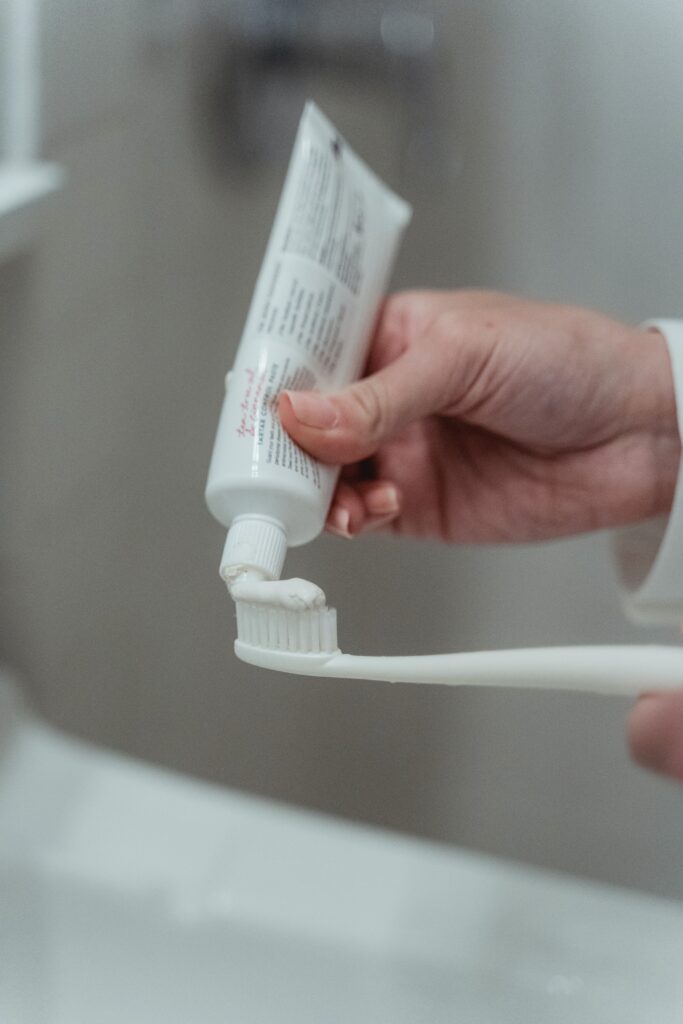Welcome to our blog post on how to master the art of using interdental brush and say goodbye to the plaque! Plaque is a common dental problem that can cause gum disease and tooth decay if left untreated. But what exactly is plaque and what causes it? In this first section, we’ll provide an overview of plaque, its causes, and the factors that contribute to its formation.
Plaque is a sticky film that forms on the surface of your teeth and is made up of bacteria, food particles, and saliva. It starts forming on your teeth within minutes of eating and drinking. If not removed, plaque hardens into tartar, which can only be removed by a dental professional.
The primary cause of plaque buildup is the lack of proper oral hygiene. By not brushing and flossing regularly, food particles and bacteria remain on your teeth, leading to the formation of plaque. Furthermore, certain lifestyle factors such as diet, smoking, and excessive alcohol consumption can also contribute to the development of plaque.

What is Plaque and What Causes it?
Plaque is a soft, sticky substance that forms on your teeth and contains millions of bacteria. These bacteria feed on the sugars in the food and drink you consume, producing acids as a byproduct. Over time, these acids can erode the tooth enamel, causing cavities and other dental problems.
The main cause of plaque buildup is inadequate oral hygiene. Brushing your teeth at least twice a day and flossing daily can help prevent the formation of plaque. However, brushing alone is not enough to remove plaque from all areas of your teeth. Interdental brushing, which involves using a small brush to clean the spaces between your teeth, is essential for effective plaque removal.
Certain factors can increase your risk of plaque buildup. These include consuming a diet high in sugary and starchy foods, using tobacco products, taking certain medications that reduce saliva production, and having a history of poor oral hygiene.
The Benefits of Using Interdental Brush
- Preventing gum disease: Interdental brushing helps remove plaque and bacteria that can cause gum inflammation, known as gingivitis. If left untreated, gingivitis can progress to a more severe form of gum disease called periodontitis, which can lead to tooth loss and other complications.
- Reducing the risk of cavities: By removing plaque from between your teeth, interdental brushing helps prevent the formation of cavities. Cavities occur when the acids produced by plaque bacteria erode the tooth enamel, creating holes in the teeth.
- Eliminating bad breath: Plaque buildup and trapped food particles between your teeth can cause bad breath. Interdental brushing helps remove these odor-causing substances, promoting fresher breath.
How to Choose the Right Interdental Brush
Size Matters
Choose an interdental brush that fits comfortably between your teeth. Brushes are available in various sizes, usually ranging from 0.4mm to 1.5mm in diameter. Your dentist can recommend the appropriate size for your individual needs.
Look for Quality Bristles
Opt for brushes with soft, high-quality bristles for effective cleaning and to avoid damaging your gums. It’s also essential to replace your interdental brush regularly, as worn bristles will not clean effectively.
Consider the Handle Design
Select an interdental brush with an ergonomic handle for improved grip and ease of use. Some handles are designed with a flexible neck, allowing for better access to hard-to-reach areas.

The Steps for Mastering The Use of Interdental Brush
To effectively incorporate interdental brushing into your oral care routine, follow these simple steps:
- Select the appropriate size of interdental brush for your teeth. If you’re unsure, consult with your dentist for a recommendation.
- Gently insert the brush between two teeth, taking care not to force the brush or cause discomfort. The brush should fit snugly but not too tight.
- Move the brush back and forth several times to clean the space between your teeth effectively. Make sure to clean both sides of each gap.
| Interdental Brushing Tips | Description |
|---|---|
| Replace your brush regularly | Worn bristles won’t clean effectively, so it’s essential to replace your interdental brush every one to two weeks or when the bristles become deformed. |
| Start with the front teeth | Interdental brushing may feel awkward at first. Start with the front teeth, where it’s easier to see and access the spaces, and gradually work your way to the back teeth as you become more comfortable. |
| Use a mirror | Using a mirror can help you see what you’re doing and ensure you’re cleaning all areas effectively. |
Tips for Making Interdental Brushing Easy
- Establish a routine: Incorporate interdental brushing into your daily oral care routine, either in the morning or evening. Creating a habit will make it easier to remember to clean your teeth regularly.
- Use a variety of tools: If you find it difficult to use an interdental brush in certain areas of your mouth, consider using other tools such as dental floss or a water flosser to clean those spaces effectively.
- Seek professional guidance: Ask your dentist or dental hygienist for advice on proper interdental brushing techniques and to recommend the right brush size for you. They can also provide personalized tips to help make interdental cleaning more comfortable and effective for your specific needs.
Conclusion
In conclusion, effective interdental brushing is essential for maintaining good oral health and preventing plaque buildup. By incorporating interdental cleaning into your daily oral care routine, you can reduce your risk of gum disease, cavities, and bad breath. To master the art of interdental brushing, choose the right brush size and quality, follow the proper technique, and establish a routine that works for you. Remember, a healthy mouth is the key to a healthy body, so put these tips into practice and keep your teeth and gums in top shape!
Liking our blogs so far? Make sure to checkout our website for more amazing dental blogs and share it with your family and friends!

